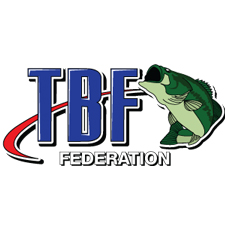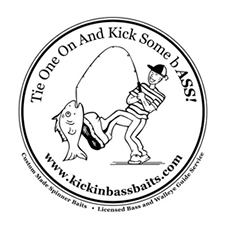It’s the beginning of Summer, and the true opening of our favorite season. As the season totally opens over the northeast, we have a lot of things to keep in mind. One is boater safety, dealing with others not so experienced at ramps, and ignorance on the water. I ask you to be patient, and try to help, if possible. In this last year as Conservation Director, I’ve received a lot of education and seemed to have been at the right place at the right time, to witness things. Maryland slot regulations will be in effect again this year. Tournament Directors need to make sure they schedule and have their permits ON THEIR PERSON for Maryland waters. 10+ boats needs a permit. I’m sure some of you have heard, and I was there in person, when “paperwork” was checked and also handed out the other week. Maryland DNR Police showed up at Anchor Marine checking permits. Long story short, one TD received a written warning for not having his permit with him. We did go on our phones to MD DNR site to show it was applied for, approved, and posted. The other group from a neighboring state, had a permit for a different ramp, on a different weekend- this didn’t fly. The TD received a $120 fine! Make sure you also adhere to the option 1 or 2 regulations when fishing the tournaments as well. Smallwood and Anchor Marine are the only two MD ramps I know of with the appropriate option 2 facilities. Elk Neck State Ramp is in process of being the next site, but the DNR has not figured out how they’re setting it up yet. Fish Care is number one, and starts with boat care.
Boat care:
Check livewells; operation, aeration and clean them. Many people complain about live wells running down their batteries, or that they had the live wells on and the fish still died.
Check your pumps to make sure they’re not broken and are properly working at full capacity. Sometimes impellers are corroded, have broken blades, or the magnets in the motors are worn out.
Make sure there’s nothing clogged up or jammed in any of tubes, hoses, or water pick ups; fish guts, leaves,seeds, crawfish,worms etc. All these things can make your pump work harder causing your batteries to run down quicker. Check for leaks as well. Water leaks are one thing. Be sure to check for air leaks, which don’t allow your pumps to prime properly and cause poor water pressure and flow.
Clean your livewells regularly. We probably don’t think about this much, but I’m sure there’s a lot of nasty bacteria, fish viruses or critters, hiding in our live well systems after our boat sits for a couple days not being used. Take the time to actually wash the system out and disinfect it. Remove all debris, that is in bottom. There are some natural organic disinfectant products available on the market. I use a food grade water bleach solution of 1 ounce bleach to 1 gallon of water. Wear appropriate gloves as needed. Close the valves so that no water can get out of your live well. Dump an entire gallon of the solution into your live well. Use a sponge or brush and scrub the sides and the bottom. You can try to recirculate the solution through the system, but may have to add more in order to get flow. It is recommended to utilize this strength of sanitizer for about a minute. Once done, put a bucket at your drain point for your livewell system, and empty your livewells. Now your system has been disinfected as much as possible. Depending on boat design, reuse the solution in the second live well. Dispose of the solution properly. I would not dump it on to the ground, remembering that bleach is a corrosive and caustic chemical, harmful to all living things. Remember that bleach can damage fabrics and carpets well.
Check your batteries. Make sure they’re fully charged and the cells are full. Make sure they’re capable of being fully charged. Most of us are relying on one battery to crank a motor, run all electronics and live wells, while we use two and three others to run a single trolling motor. We then rely on the big motor, when we run it, to charge that one battery. If the battery is worn out, it won’t fully charge, and also cause your charging system work harder when the big Motor is in operation.
Now after all is clean and running properly, make sure to recirculate the water to keep it oxygenated. Oxygenators are a great product to use. One drawback to them is many livewell additives contain salt. When used with an oxygenator type product, it will KILL YOUR FISH. It’s one or the other. Temperature is also another concern especially in the hot months of July, August, and September. Make sure to keep your water temperature in the live well, within 5° of the current body what are your fishing. Some people use ice to help cool things down and destress the fish. Be careful not to use too much ice because you can throw the fish into shock and cause them temperature related illnesses as well. The best thing to do is use your live well with the recirculation of freshwater. It keeps the temperature down, oxygenates the water, and flushes any other impurities out as well.
As mentioned, there are some additives to keep your fish de-stressed and alive. There are mixed feelings about these products, with studies being done all the time. As for stopping bleeding of a fish, many people are known for using Mountain Dew. The citric acid chemically cauterizes the injury. Some people have mixed feelings about this as well.
A very important thing to remember, especially with smallmouths coming out of deep water, is decompression. I witnessed and dealt with it this past April, first hand. Two live wells, 9 Smallmouth, all over 4lbs floating belly up after an event. Learn to Fizz Your Fish. It’s not a difficult process, and there are kits available on the market if you can’t get the materials yourself. There are plenty of videos on YouTube and the Internet for instruction. I do not recommend taking advice from any videos that show actually removing a piece of flesh or scales, from the fish to achieve this practice. Those people are butchers and don’t know what they’re doing. Those fish will most likely get an infection and die. It is basically taking a hypodermic needle end, injecting it under a scale of the fish, approximately .5-1 inch behind the side front pectoral fin, into the swim bladder, while under water. It releases the gas built up within the swim bladder allowing the fish to swim upright. Monitor your fish throughout the day. You may have to do this more than once. It is believed that stress throws off their metabolism as well, not allowing them to naturally adjust, besides the physical decompression itself.
One last thing is Culling clips. PA does not allow puncture or clip style culling systems. The also don’t want anything touching the gills or interior gill plate. I’m am in the process of approaching PA Fish and Boat Commission to consider allowing the Clip N Cull design products. I wish you all the best of luck and tight lines. Have fun, enjoy your time on the water, and maybe take somebody new with you.
















































